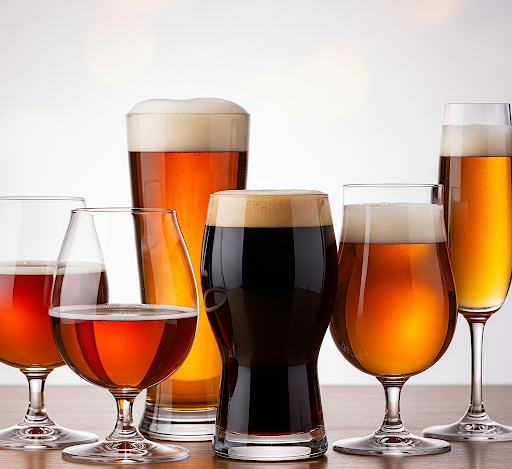Pouring the Perfect Glass of Guinness (Or Other Nitro Beer)
The art of the perfect Guinness pour, achieving that iconic, creamy-headed pint of Guinness, is more than just pulling a tap; it's a ritual, a delicate dance of nitrogen and stout that, when executed correctly, delivers an unparalleled drinking experience. From the style of your kegerator, to the specific glassware, to the timing, every element plays a crucial role in transforming a simple beer into a work of art.
The Foundation
The first factor in getting your perfect glass of nitro beer will be your kegerators set up. “Nitro” beers are named as such because of the Nitrogen involved in dispensing them, but unlike cold brew coffees and wine, this is not a pure Nitrogen gas. Beer gas, or a 75% Nitrogen, 25% CO2 blend, is used on these beverages, and adds the creamy texture that they are known for. The pressure that this gas is dispensed at is also much higher than standard at a 30-40 PSI standard as opposed to the traditional 10-12 PSI. You also store your kegs a bit hotter, around 41 degrees Fahrenheit instead of 35 degrees.
Nitro and Beer Gas tanks are not the same as CO2 Tanks!
They have a female connector instead of the traditional male CGA, and ergo need a different style of regulator to connect to.
The faucet on your kegerator will also be different than the one you use for traditional beers. Stout faucets have small percolator screens in them that cause the degassing of nitrogen when you pour through them. This gives the cascading effect that is essential to the perfect Guinness pour, but also is great for all nitro beers to give off aromatics and provide a smooth velvety mouthfeel.
Intertap faucets have a stout attachment so that you can quickly and easily switch between the standard and the diffused nozzle without replacing the entire tap.
The Right Glassware
Always opt for a clean, stout-specific glass. The ones branded by Guinness are 20-ounce glasses designed with the iconic harp logo, serve as a visual cue during the pour for their brand, but any large stout glass will do. The shape and thickness of these glasses are designed to maintain the beer's temperature and showcase its distinctive characteristics.
Beginning Your Pour
Begin by holding your chosen glass at a 45-degree angle, positioning it just under the tap. Ensure the tap itself does not touch the glass, and firmly but smoothly, pull the tap handle towards you. This action allows the stout to flow from the tap and surge down the side of the tilted glass. Continue this until the beer fills the glass to approximately three-quarters of the way up, or on a Guinness glass reaching the top of the golden harp logo. This initial surge is vital for initiating the nitrogenating process, creating the characteristic "surge" that Guinness is known for.
Once the glass is three-quarters full, you must allow the beer to settle. You'll observe the initial surge subsiding, the creamy white foam beginning to consolidate, and the distinct separation of the liquid stout from the creamy head. This settling period, which can take around 90-100 seconds, allows the nitrogen bubbles to rise and form the velvety head. Once the surge has noticeably calmed, push the tap handle away from you to complete the pour (on non- Guinness tap handles / faucets, you will pull towards you again). This gentle top-off fills the remaining space in the glass, creating that signature domed head that should sit slightly proud of the rim. A truly perfect pour will have a head that is dense, creamy, and holds its shape.
The entire process, from the initial tilt to the final settling of the head, should ideally take approximately 119.5 seconds. Rushing this process will result in a flat, unappealing pint with a weak head. Embrace the wait; it's an integral part of the Nitro beer experience!
All that is left is to enjoy your work. Cheers!


